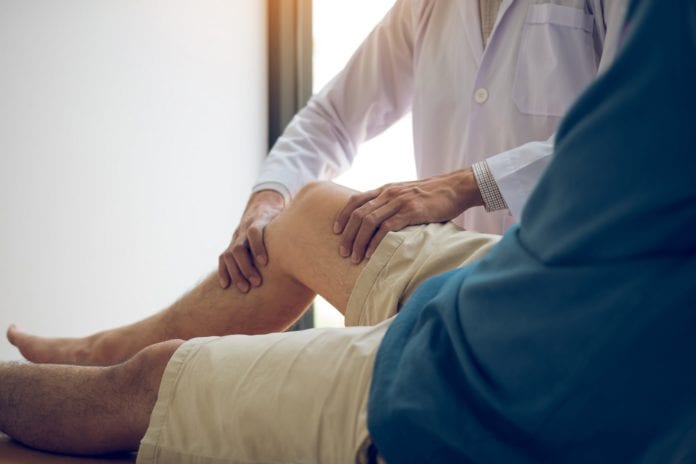When to Use Cold Therapy
It’s best to use cold therapy for acute or sudden pain caused by a recent injury that’s sensitive, red or inflamed. Inflammation is a normal bodily response to an injury, but it can be quite painful. Here are some of the most common acute injuries that benefit from cold therapy:
- Ankle sprain
- Inflammatory arthritis flare-ups
- Muscle or joint sprain
- Red, hot or swollen body part
- Sudden intense pain after exercise
A joint or muscle sprain damages the blood vessels in the injured part of the body, which causes swelling. Applying something cold—such as an ice pack wrapped in a towel—helps constrict those blood vessels, which can reduce bruising and swelling.
Cold therapy is also beneficial for treating soreness or pain related to exercise. For example, you can apply an ice pack to the painful area after going for a run to reduce post-exercise inflammation.
How to Safely Use Cold Therapy
Cold therapy is safest and most effective when you follow these tips:
- Apply ice as soon as an injury happens or after intense, high-impact exercise.
- Do not apply ice to areas of the body that have poor circulation.
- Never use cold therapy for more than 20 minutes at a time.
- Only apply cold to the injured area.
- Wrap the ice pack in a towel before applying it to the affected area.
When to Use Heat to Treat an Injury
The goal of heat therapy is to improve circulation and to get blood vessels to expand and the muscles to relax. By increasing the temperature and improving circulation, heat should relax the injured muscle and improve flexibility. Relying on heat to relax your muscles can also relieve a lot of pain caused by arthritis and stiff joints.
Heat Therapy:
- Relaxes muscle spasms
- Stimulates blood flow to the injured area
- Soothes sore muscles
It’s Most Beneficial for:
- Arthritis pain
- Ongoing muscle pain or soreness
- Stiff joints
How to Safely Use Heat Therapy
Get the most benefits from heat therapy with these tips:
- Apply heat before exercising to relax the muscles. If you apply it after exercise, it can aggravate inflammation and existing pain.
- Avoid direct contact with heating devices (like a heating pad). Wrap your heated device in a folded towel to reduce your risk of burns.
- Drink plenty of water to stay hydrated during heat therapy.
- Minimize prolonged exposure to higher heat therapy.
If heat relieves your pain, you can try a continuous, low-level heat wrap for up to eight hours at a time, even while you sleep. These wraps are available at most drug stores.
What to Avoid When Using Heat or Ice to Treat an Injury
Ice can worsen muscle spasms and tension, while heat can increase inflammation in a recent injury. The best thing to remember is to not overdo it with either form of treatment.
While it’s normal for your skin to be slightly pink after using heat or cold therapy, call your doctor if you notice blisters, hives or additional swelling.
Otherwise, simply follow these guidelines depending on your condition. Using heat and ice to treat an injury can be very helpful in reducing pain if used correctly. When in doubt about which therapy to use, ask your doctor.
 You’re not alone if you have ever been confused about whether to apply ice or heat to an injury or painful area. We all know icing and heating are two of the most common and natural treatment options available. These treatments have been around for decades and provide good ways to reduce pain. The question is: which is best, ice or heat?
You’re not alone if you have ever been confused about whether to apply ice or heat to an injury or painful area. We all know icing and heating are two of the most common and natural treatment options available. These treatments have been around for decades and provide good ways to reduce pain. The question is: which is best, ice or heat?



